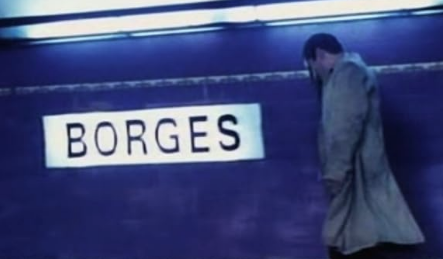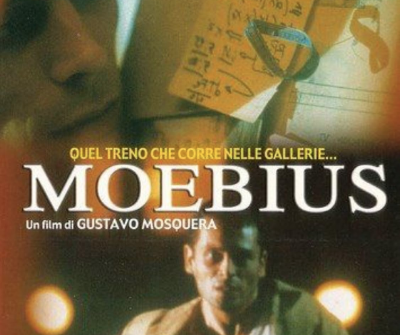Möbius (1996) Moebius
IMDb meta-data is a runtime of 1 hour and 25 minutes, rated 6.8 by 2,101 cinematizens
Genre: Sy Fy.
DNA: Argentina.
Verdict: Olé!
Tagline: What goes around comes around, eventually.

Among the hundreds of trains and the millions of daily passengers at more than a hundred stations dotted along two hundred kilometres of tracks in tunnels beneath the city, one train with thirty or so passengers has not arrived…anywhere. In such a closed system how can a ten-car train disappear?
Up the chain of command goes the report, received at each higher level with increasing incredulity. No one believes the reports of subordinates, and so each has to see for himself, and they find there is nothing to see. There is no train UM86: Vanished.
McKinsey management clicks in and the responsibility, i.e., blame, is delegated downward to an intern at the construction firm that built the last line integrated into the system. No one wants to know what happened so much as they want the problem to go away…now.
The intern visits the archives to examine the subway engineering plans, and that proves to be a scene from Franz Kafka’s The Castle. Though the plans must never leave the archive, they have, and slowly he tracks them down, but — here I quibble — he examines them only briefly.
The last metro station the Intern uses is called (Jorge Luis) Borges. Hint! Hint!

Through the compounding complications of repeated additions and tinkering the subway system has become such a labyrinth that no one any longer knows quite how the system works as a whole. That complication together with the fiction of the writer puts train UM86 into an eternal loop, moving so fast – at the speed of thought – it cannot be seen but only heard. This must be the M. C. Escher line.
The atmosphere is oppressive with a humid heat, and the need to keep the trains running. Though the intern wears a raincoat over his t-shirt throughout. Is there symbolism there?
In a nice touch it ends where it began. The ghost train(s) just won’t go away.
A few of the reviews I read missed the point entirely but were nonetheless free with their opinions, as am I. And the point is…?
Beneath the everyday surface of bustling Buenos Aires, are the catacombs of the living dead who disappeared between 1974 and 1983 in the Dirty War. Argentines, doubtless, would see this point immediately.

The intern discovers that, like the Dirty War, no one today wants to know what happened to the train and those missing passengers, they just want to forget about it. The missing passengers, well, nothing will bring the back anyway. But it just won’t go away. It’s there and it’s not there: unseen but ever present. The janitor scrapes the posters of the missing off the stairwell walls every night and they reappear every morning. (A comparable fable is Alain Resnais’s Muriel (1963) in which its subject — torture — is never mentioned yet is palpable.)

Even more impressive is that this is a film school project, all the players are students and staff and the funding was partly by the school and partly by the participants. At times the camera work loses focus, though overall it is compelling with nods to 2001. The acting is fine, and the direction matches the material. By the way, some of the older men in the cast and crew were arrested, beaten, incarcerated, tortured, and imprisoned during the Dirty War for the crime of being students, of wearing a beret, of having a moustache, of having a red rose. Follow the link below to a monument to the Disappeared.
There are hardly any women in the movie. One is a lecturer who is asked for the address of her predecessor, and some of the silent passengers. The teenage neighbour comes and goes with few words and contributes little to the plot.

